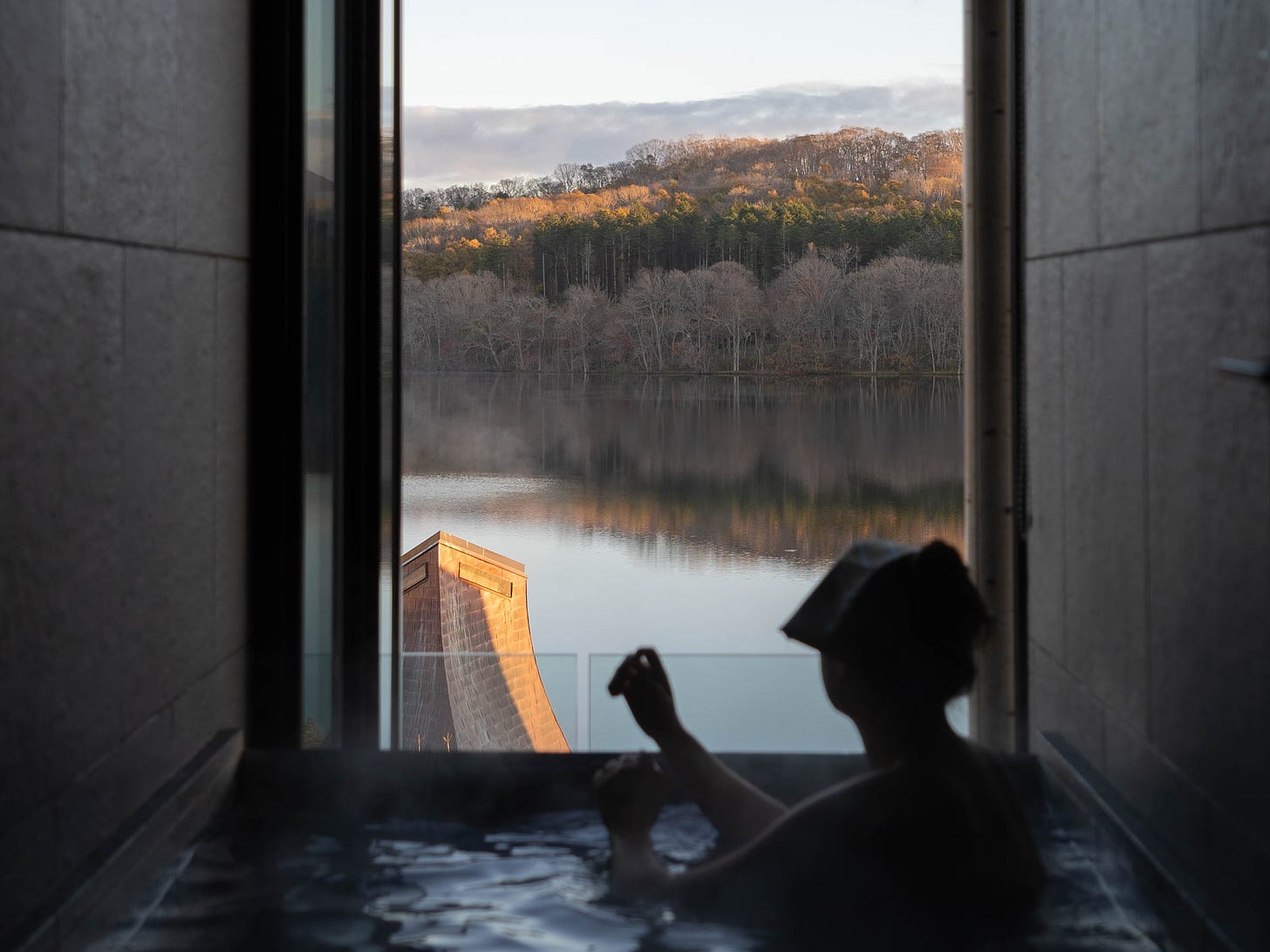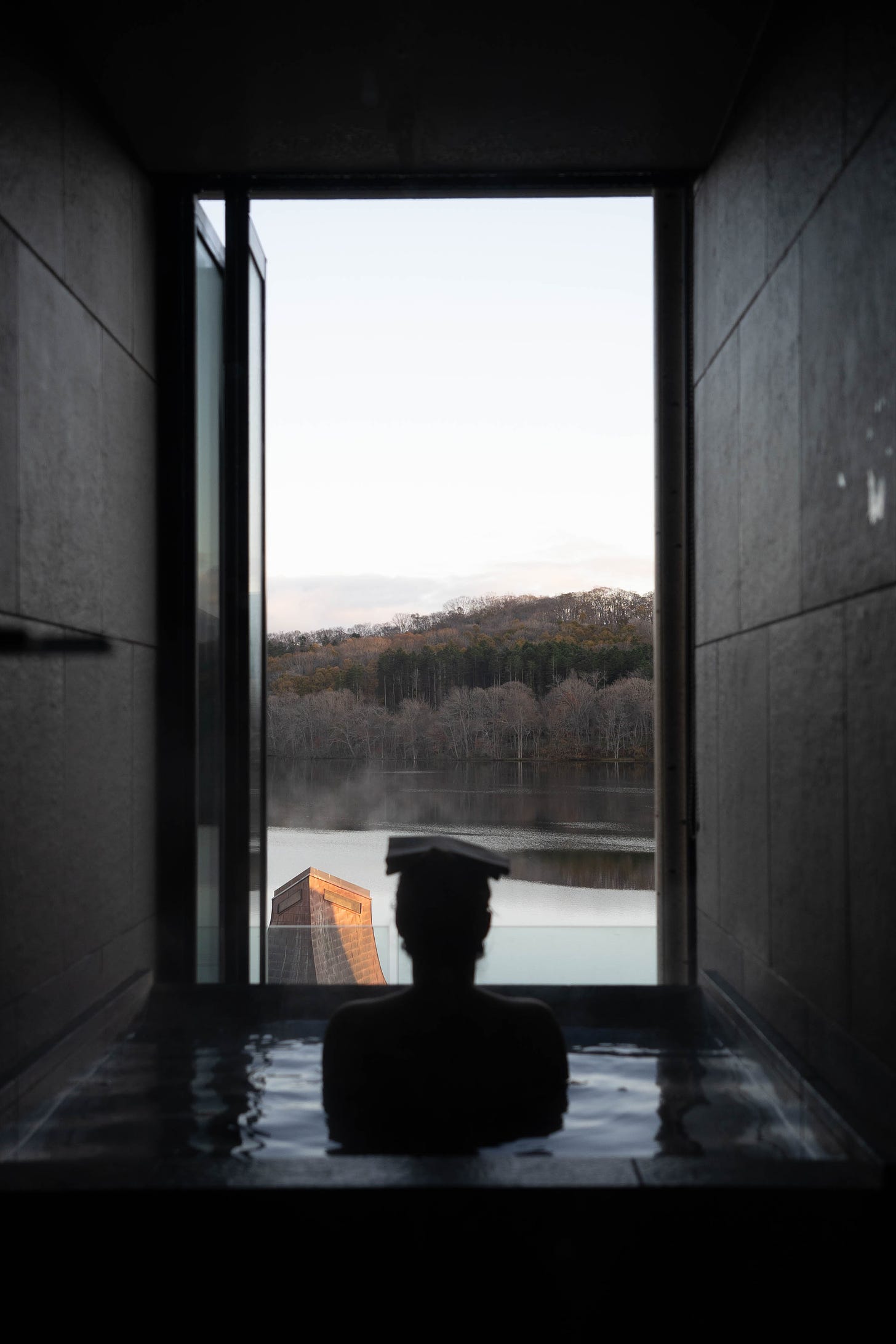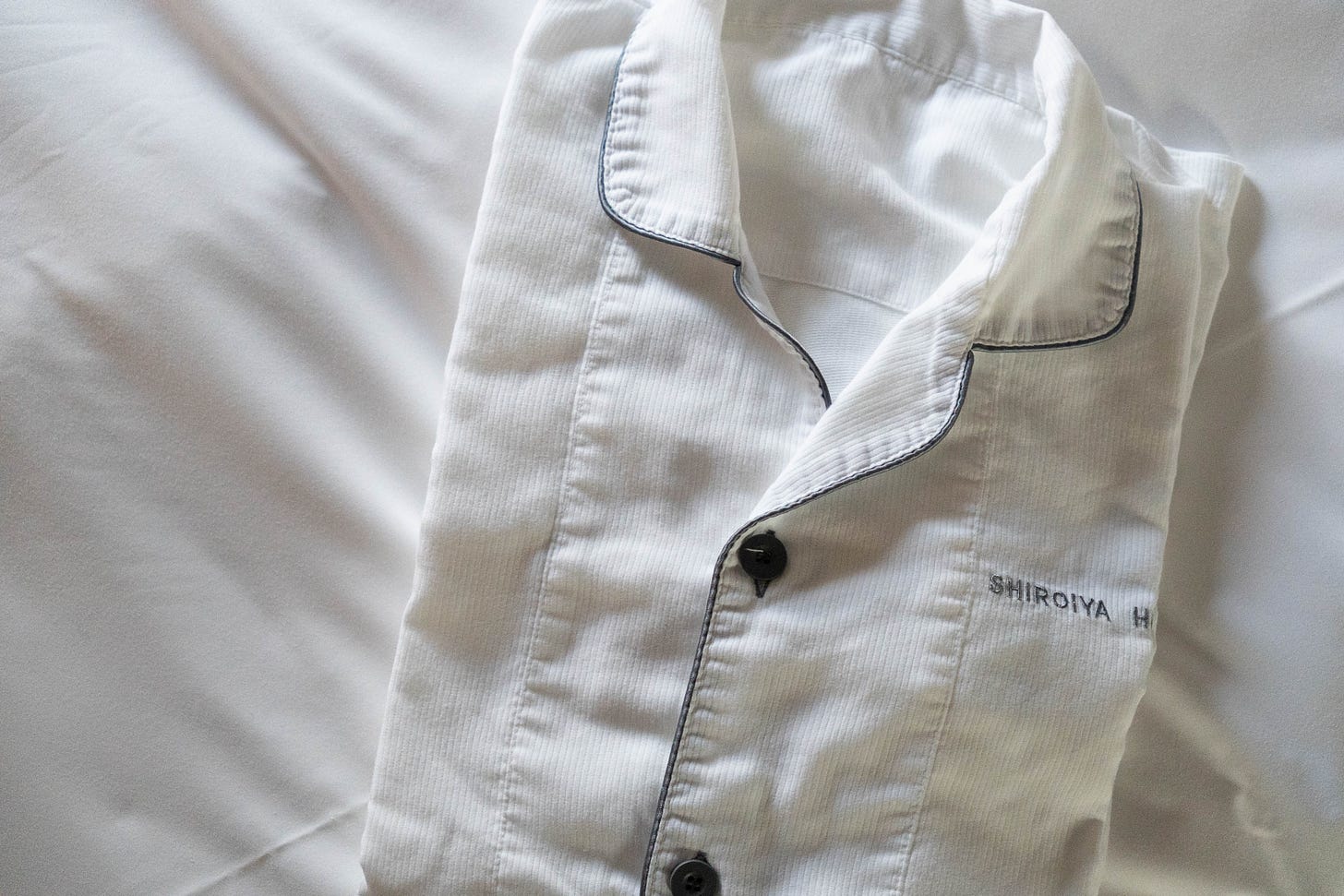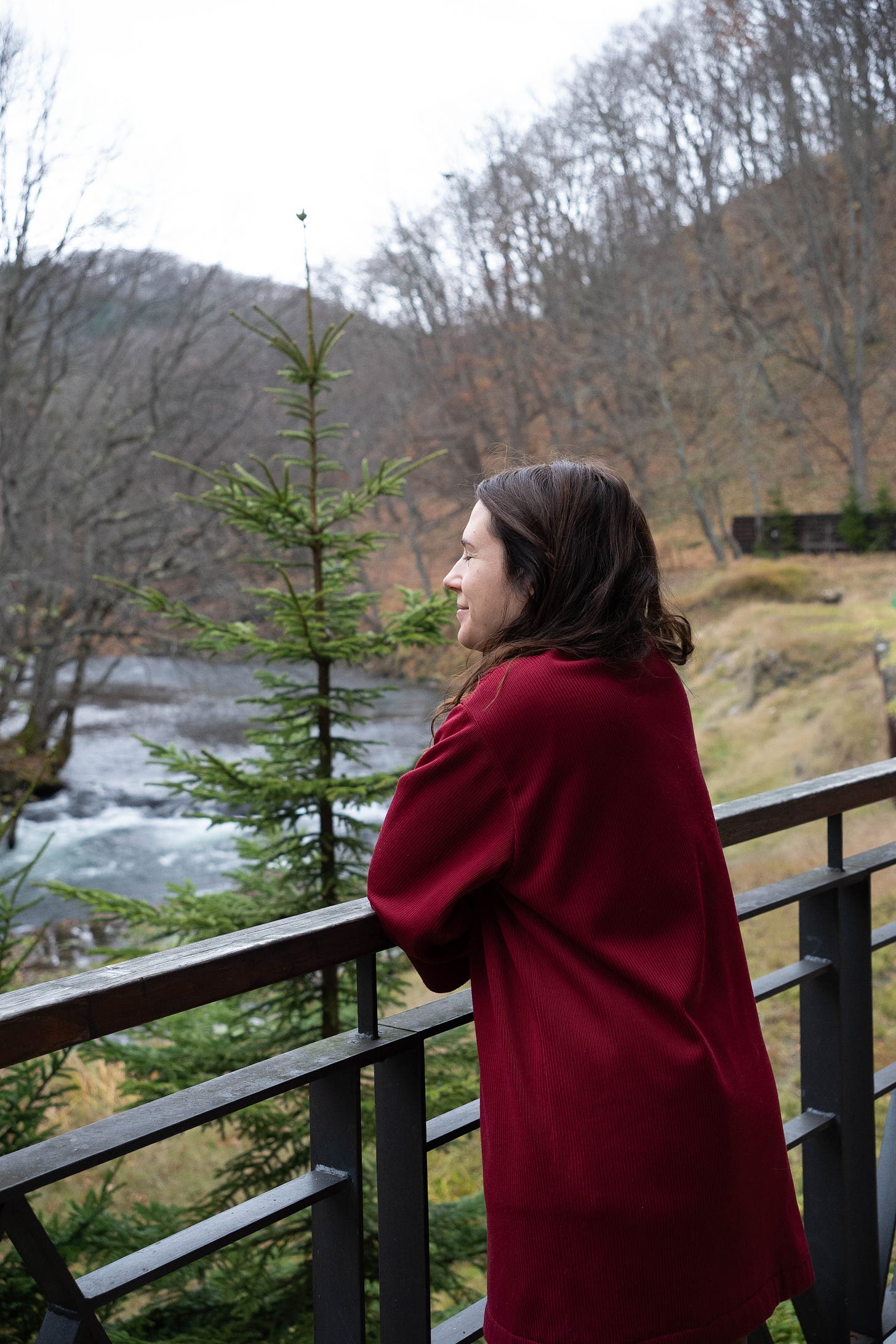Notes from Japan: on Cleanliness
The first of a four-part mini series (one for each week spent here) where I reflect on an aspect of the Japanese culture that I am fascinated by, disecting all the ways in which it resonates with me.
I grew up in a country (Italy) that takes great pride in its hygiene standards. You won’t find a single household in Italy without a bidet, and in any supermarket, you’d raise more than a few eyebrows if you were to even consider approaching the fruit and vegetable stands without the prescribed plastic gloves (we’ll worry about the climate repercussions of this habit another day). In every bar or cafe, the food offering is safely displayed behind glass, away from the public’s germs (a concept that seems totally foreign in our hip neighbourhood cafe in London, where a never-ending line of customers brushes past your pain au chocolate).
Perhaps more poignantly, I was raised by a mother (Franca) who takes even greater pride in her hygiene standards. At my parent’s house, hoovering is a task carried out daily, mopping is every other day. Inevitably, some of that (some may say pathological) germophobia rubbed off on me growing up. That is, until I moved to London over ten years ago, and my standards necessarily had to… soften. To paint the picture, in my early twenties Silvia, one of my closest friends from uni, started calling me with the pet name “Amuchina” – a notorious Italian brand of gel sanitisers. She still does affectionately call me that. Yes, I was that girl carrying around hand sanitisers with me wherever I went, well a decade before Covid made it a norm.
Yet if there is a people who can collectively beat the Italians at the cleanliness game, that is the Japanese. This is not just about their famous “shoes off indoors” policy. I am talking about a deeply rooted cleanliness culture that makes even me – my mother’s daughter – feel somewhat like a dirty troglodyte.
Toilet talk
As unglamorous a topic as it is to kick things off, Japanese toilets are the stuff outsiders whisper about in reverence (even a glint of nostalgia) once they are back in their own countries. At least, I do. Endowed with more buttons than my Amazon Firestick remote controller, they represent the pinnacle of technological advancement in this field, considerate design and, of course, hygiene.
For starters, seats are heated. Not only that, but the more advanced models feature a selection of natural tones, ranging from waterfalls to birds chirping, designed not only to inspire your “movements”, but to mask the resulting noises to an outside bystander. They have an integrated secret nozzle that performs the function of a bidet, with at least 3 intensity modes to choose from and even an oscillatory function that will leave your rear bull’s eye squeaky clean.
Of course, like most things in Japan, toilets come with their own etiquette, a lesson I learned the hard (read: embarrassing) way. For instance, you are not to use your indoor slippers within the toilet area: in fact, you are supposed to use the designated toilet slippers. A rule, I am ashamed to say, I flagrantly broke, when I accidentally forgot I was wearing them and merrily walked out the toilet and into a public Onsen* lounge. As I was getting ready to undress and looked down at my feet, I realised with horror I had just committed a major faux pas, despite having read a whole book on Japanese etiquette in preparation. Luckily the two Japanese young women who witnessed said faux pas were polite enough not to draw attention to it. Let this be your lesson to leave the toilet slippers where they belong!
*Onsen
An Onsen is a hot spring around which is built a public bath (somewhat akin to a Turkish Hammam). More than that, it’s a big part of Japan’s social and cultural life, and as such, something I would highly recommend experiencing when visiting Japan. Traditionally outdoors and mix-gendered, today most public Onsen are divided by gender, and have a strict no-swimsuit, no-tattoo and (understandably) no pictures policy. Once you get past your prudeness (which I have in spades) and the awkward feeling of being stark naked in front of complete strangers, it is actually a very liberating and weirdly empowering experience. Not to mention the feeling of absolute relaxation that follows.
Although my mother would actually recoil at the thought of skinny dipping in what is essentially a big public bath, the iron-clad etiquette Onsen-goers must follow means your body truly is as pure as a temple when you enter.
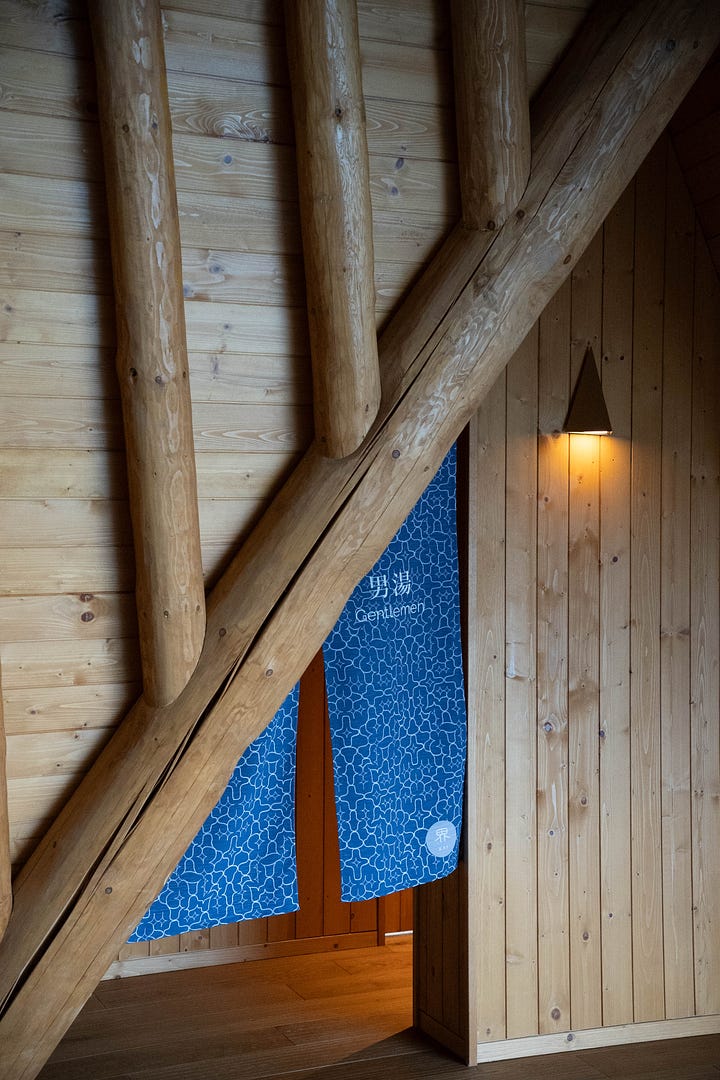
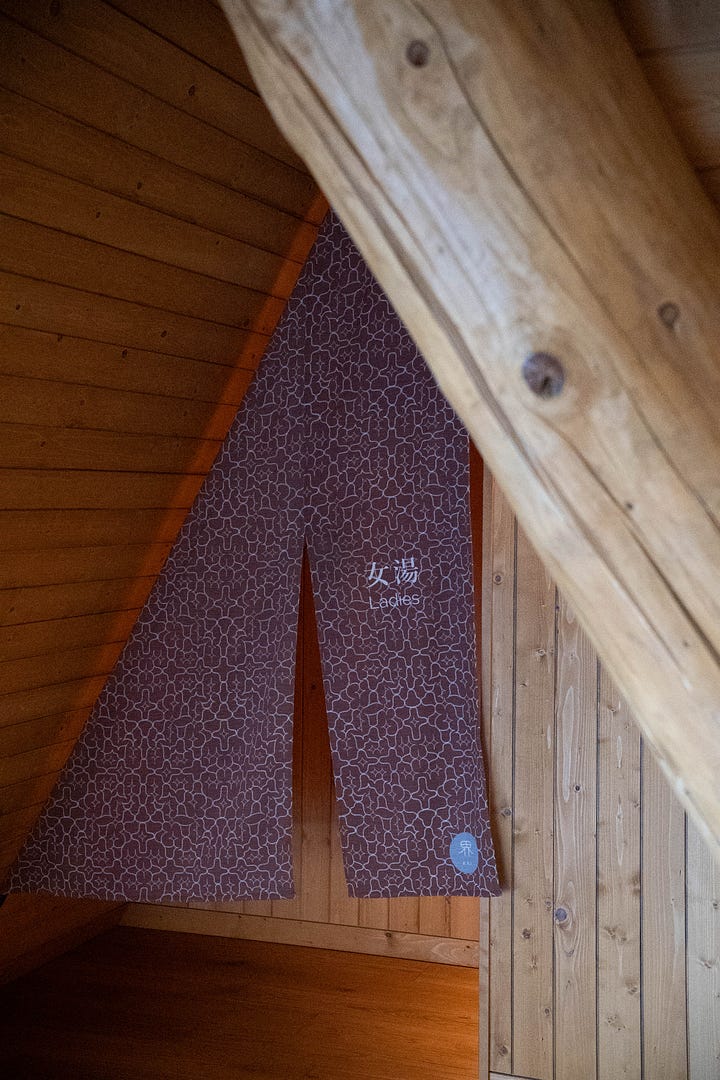
In the foyer that leads to the actual baths, past the changing rooms, you’ll be met by rows of low stools lined up facing a wall, each with a small shower handset, a bucket, and (in the fancier places) an array of soapy products. You are to enter this area completely naked, bar a very small slip of a towel called Tenugui. This towel is generally used to scrub yourself clean in the shower, but it will also quickly become your best friend – as it is acceptable to use it as a (thin) modesty veil when you walk around the facilities. The main thing is that the Tenugui should never, ever, come in touch with the bath water. It is meant to be folded neatly and kept balanced atop your head for the duration of your soaking.
But there is more to the Onsen rulebook than cleanliness. There is a whole procedure you should follow in order to make the most out of the experience.
Here are the main tenets according to a “How to Bathe” poster I found outside an Onsen I visited:
Wash your body and hair until you are completely clean. Customers with long hair must secure their hair with a hair tie or wear a shower cap.
Pour 10-20 buckets of hot water over yourself to help your body acclimate to the water's temperature. Focus on the extremities to avoid sudden changes in blood pressure.
A water temperature of 40°C is optimal for relaxing the body. Water that is too hot stimulates the nervous system and hinders your ability to relax.
Walk in up to your hips. Slowly continue to submerge yourself until the water is up to your waist, then take a deep breath. Continue until you are up to your shoulders while taking slow, deep breaths.
Start with 10-minute bathing sessions (spending too long in the bath will stress the body).
Use proper deep breathing techniques to enhance the water's relaxing effects. Breathing exercise: Exhale a long thin breath from your mouth and count to 8. Then, inhale from your nose while counting 4. Repeat the cycle ten times.
Aim to raise your body temperature by 0.5-1°C to boost immune function and raise your metabolism.
Continue to sip water throughout this time to maintain a healthy water balance and to enjoy the bath longer.
Avoid taxing your body by only entering up to the waist for subsequent baths. Continue to aim for 10-minute intervals of bathing time.
10 minutes in 40°C water will raise your body temperature by about 0.5 ~ 1.0°C. Try to leave the bathtub when the forehead starts to sweat, regardless of the bath time.
After getting out of the bath:
Rinse yourself with water drawn from the hot spring to cleanse your body without washing off the spring's minerals.
Drink room-temperature water to stay hydrated.
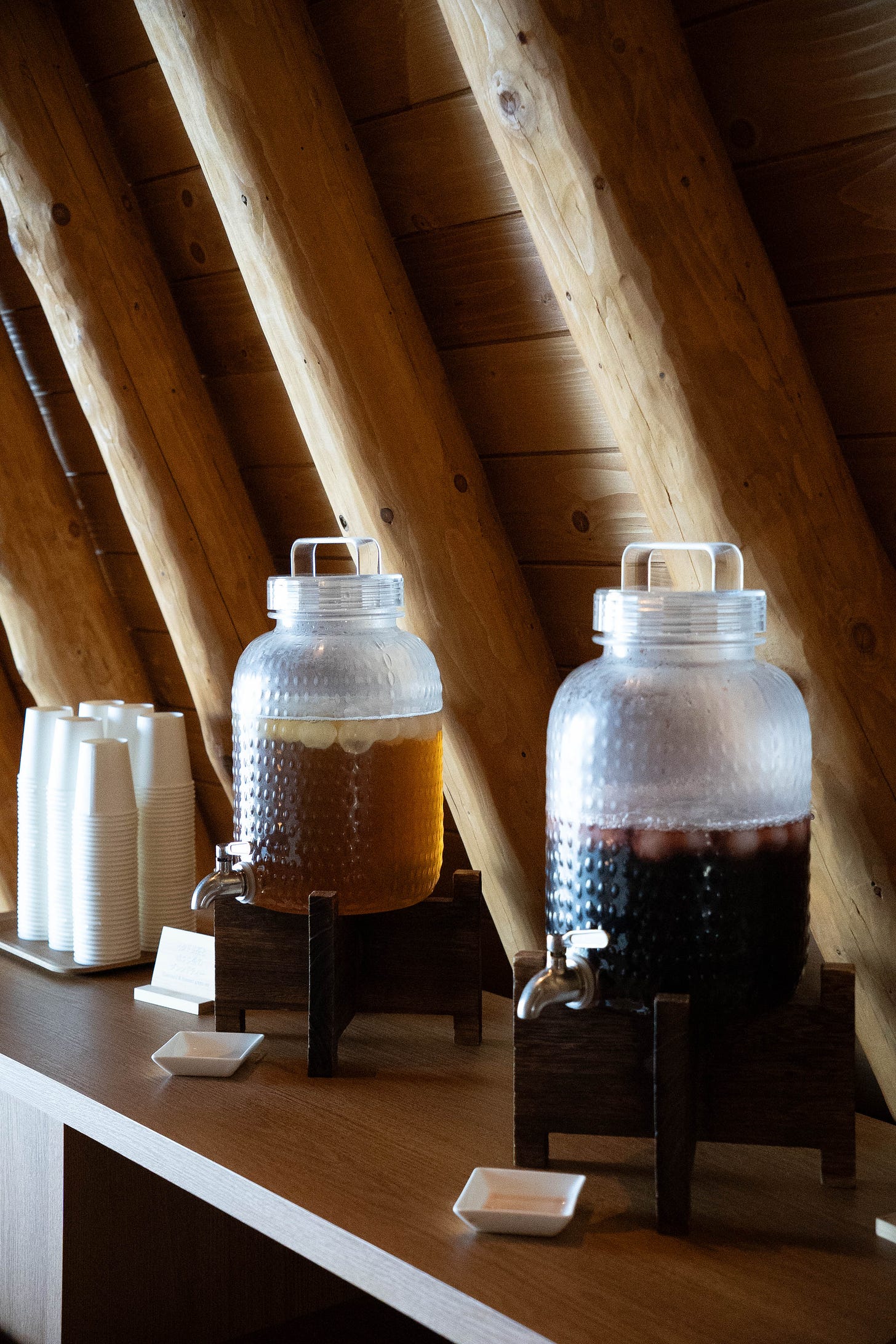
As a small token of gratitude, my paying subscribers will have access to my top 10 Onsen recommendations at the end of this article.
House robes
Something I hadn’t noticed on our first trip is the widespread use of House Robes in hotels across the country (contrary to this second trip, we were mainly using Airbnbs on our first visit). The style of these house robes varies from kimonos to pyjamas, but essentially, they are comfies. Use of these house robes (provided by the Hotel) is not only permitted in common areas, but actively encouraged. I think this clever little convention works on multiple levels:
On a practical level, it allows staff members to identify guests easily
From a cleanliness point of view, changing into fresh, clean robes and using them around the hotel reduces the spread of outside germs brought in on your clothes
Aesthetically, they act as a sort of uniform, creating a cohesive look which is in line with the establishment’s style
And finally, it undeniably makes the guests feel right at home, and the whole experience that much more relaxing
In public
There is also a hygiene code of conduct when you are in public spaces, especially when travelling on public transport. Blowing your nose or even sniffing is a no-go, as is eating or drinking (with the exception of the Bullet Train, where consuming your station-purchased bento box is part of the experience).
Public toilets are generally (and unsurprisingly) very clean, but you’ll often find they lack paper towels or hand driers (although they have definitely become more common in the 5 year gap between our two visits). Japanese people are known to carry their own hand towels and even small soaps. This is where your best friend, the multi-purpose Tenugui comes back to play. It is such a staple, that you’ll find whole shops soley dedicated to Tenugui (I would particularly recommend this one in Tokyo). They make excellent souvenirs!
Speaking of towels in public spaces, another type you should be aware of is called Oshibori. These are hot wet towels you’ll receive in most restaurants or sometimes hotels upon arrival, to clean your hands.
Pieces of trash
One thing that struck me about Tokyo upon our first visit was how spotless and clean it was, despite being one of the biggest metropolises in the world. Yet, there were no bins in sight, anywhere, not even in stations. Why? Because people are expected to pocket their own trash and take it back home, where it can be properly sorted into the relevant recycling bins. Images of diligent Japanese football fans recently made the headlines during the last World Cup, when they were observed staying behind to clean up the stadium. This is precisely the image my brain conjured up a few weeks before our trip, back in London, as I observed a thirty-something years old man delicately placing his empty coffee cup right on the edge of a pavement in Covent Garden, despite the glaring presence of a bin a few metres away. I appreciate this article of mine is sounding more and more damming of London – in truth, the trash issue in Italy is, alas, no better. If only we could inject some Japanese mentality into our bones…
Thank you for reading along! As promised, here is a little special thank you to my paying subscribers: my top 10 recommendations for Onsens across Japan – including all my personal favourites and a couple of ones that make my bucket list!
Enjoy!
Keep reading with a 7-day free trial
Subscribe to The Venetian Pantry to keep reading this post and get 7 days of free access to the full post archives.




